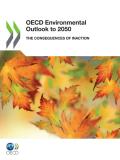This publication (the 10th edition of Greenhouse Gas Market) brings together carbon market professionals, policymakers, academics and NGOs to provide in-depth analysis and perspective on the main issues affecting carbon policy worldwide. IETA is global in its outreach and the publication features latest developments in current and emerging carbon markets, as well as taking a step back to consider the wider implications of climate policy design and implementation.

Based on joint modelling by the OECD and the Netherlands Environmental Assessment Agency (PBL), this document looks forward to the year 2050 to find out what demographic and economic trends might mean for the environment if the world does not adopt more ambitious green policies. It also looks at what policies could change that picture for the better. This Outlook focuses on four areas: climate change, biodiversity, freshwater and health impacts of pollution, identified as 'red light' issues by the previous 'Environmental Outlook to 2030' publication. This summary was prepared by Eldis.
Climate change (CC) adaptation and mitigation are identified as priorities in the Updated 2004 – 2010 Medium -Term Philippine Development Plan (MTPDP), in the light of increased occurrence of extreme weather events that are disturbing not only communities and livelihoods, but also the natural resource base, thereby critically threatening the pace of economic growth and development. Recognizing this, the Climate Change Act 1 of 2009 mainstreams CC adaptation and mitigation into government policies.
Against this background, the Philippine Government through its Department of Trade and Industry (DTI) requested GTZ to integrate measures for CC mitigation and adaptation into the Micro, Small and Medium Enterprises (MSME) Development Strategy for the period 2010 to 2016.
Approximately two million Americans are employed in sectors such as water management, agriculture, and disaster preparedness and response that contribute to building resilience to the impacts of climate change. Through investments in climate change resilience, we can proactively reduce the impact of natural disasters and drive economic growth. By spurring the development and deployment of new technologies and strategies such as efficient irrigation systems and early flood and storm warning systems we can save lives in the poor communities most vulnerable to climate change—and create jobs in the process.
This report assesses climate risks and opportunities and proposes actions. It provides a synthesis of evidence of climate variability and change, impacts, and uncertainties associated with climate change that may affect Tunisias water, land, agriculture, and coastal zones. The report then provides a detailed analysis of the potential impacts of climate change on food security and gross domestic product (GDP) as well as on local populations looking in particular at seven governorates. The report goes on to discuss possible policy options for reducing human vulnerability and for better adapting to climate variability and change. The report provides guidance to policy makers in Tunisia in three ways. First, it provides a Framework for Action on Climate Change Adaptation, represented by an adaptation pyramid. Second, it puts forward a typology of policy approaches that are relevant to the region in order to facilitate the formulation of effective policy responses by decision makers. Finally, a matrix is provided, which outlines key policy recommendations.
